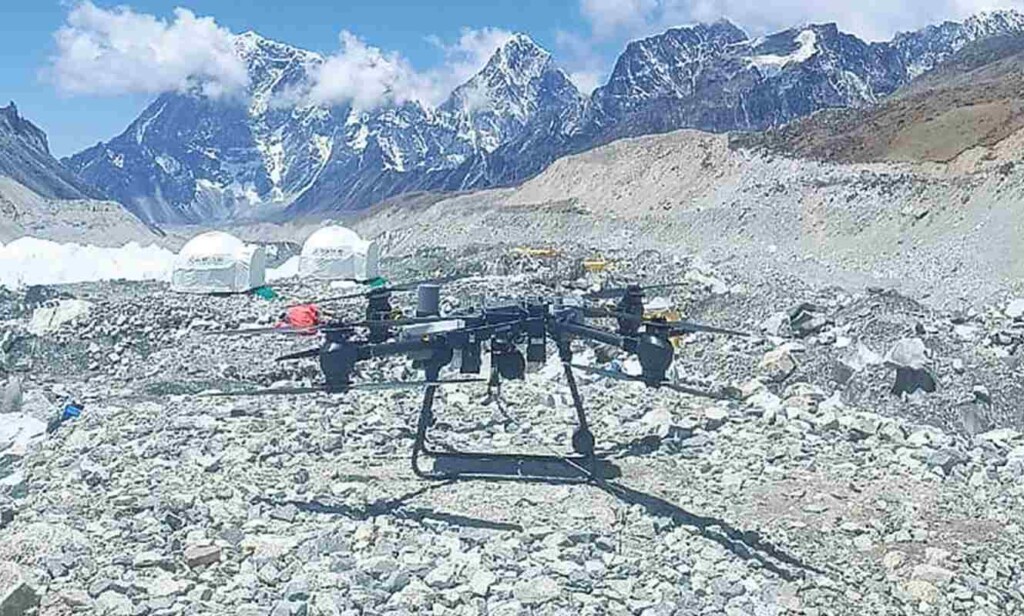"Dream, Dream, Dream! Conduct these dreams into thoughts, and then transform them into action."
- Dr. A. P. J. Abdul Kalam
"Dream, Dream, Dream! Conduct these dreams into thoughts, and then transform them into action."
- Dr. A. P. J. Abdul Kalam
16 Aug 2024
The task of removing rubbish from the world's highest mountain is intricate and multifarious, but the drones, operated by the same Sherpa porters who have been removing trash on foot for decades, will enable them to work in the riskiest locations without endangering their lives.
China's leading drone manufacturer, Da Jiang Innovations, will supply equipment to a drone operator that has partnered with the Sagarmatha Pollution Control Committee (SPCC) and the local municipality of the Everest region. These drones will be used to help clean the sacred mountain.

(Source: Google Images)
“After a successful test in April, we plan to use drones commercially in the Everest region,” said Jagat Bhusal, chief administration officer of the rural municipality Khumbu Pasang Lhamu.
The SPCC strives to guarantee that as much waste and corpse pollution is eliminated from the slopes each year. A $4,000 deposit is required to assure compliance, and climbers who intend to reach Everest Base Camp must return with 8 kilos (17.2 pounds) of trash, in addition to using Sherpas to remove trash from higher elevations and deploying helicopters to retrieve bodies. To avoid being overburdened in the low oxygen, climbers who go to Camp I or Camp II further up the slopes must return with progressively smaller weights of rubbish.
:focal(3024x2016:3025x2017)/https://tf-cmsv2-smithsonianmag-media.s3.amazonaws.com/filer_public/99/16/99164470-8527-4455-803a-d36348c268be/gettyimages-1224178459.jpg)
Nepali People Is On The Loose To Pick The Useless Racks ( Source: Google Images)
Mr. Sangam Prasain of the Kathmandu Post reports on the dangers of crossing the Khumbu Icefall on the first ascent from Everest Base Camp to Camp I. The 0.6-mile-long river of ice on Everest is one of its most dangerous features; when exposed to sunlight, it melts, moves, and becomes unstable, creating crevasses and avalanches. According to statistics provided by Prasain, around fifty Sherpa porters lost their lives while attempting to traverse the Khumbu Icefall between 1953 and 2023. This is typically done in the early morning or late evening after the ice has thawed.
The heavy lift drones demonstrated a load capability of 30 kilograms, or more than 60 pounds, at Camp I, according to trial data. However, as the altitude was increased, this capacity decreased to barely 18 kg at Camp II, which is situated at 6,400 meters above sea level. Garbage and bodies from decades ago are exposed as warmer summers melt Everest's snow and ice, endangering the purity of the meltwater that nourishes streams and rivers throughout the mountain's surrounding valleys.
Recognizing this, the SPCC is working hard to try and remove these potential contaminants from one of Buddhism's holiest mountains!